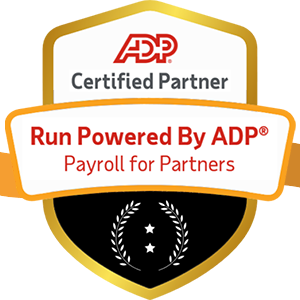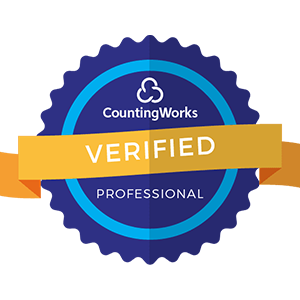Introduction:
In today's fast-paced and ever-evolving business landscape, companies are increasingly turning to flexible workforce solutions to stay competitive and adapt to changing market demands. Part-time and freelance workers have become an integral part of many organizations, offering a cost-effective and agile approach to staffing. However, managing payroll for this diverse group of employees can be a complex and challenging task. In this comprehensive guide, we'll explore the key strategies and best practices for effectively managing payroll for your part-time and freelance workers, ensuring compliance, accuracy, and employee satisfaction.
The Rise of the Flexible Workforce

The traditional 9-to-5 workday is becoming a thing of the past, as more and more companies embrace the concept of a flexible workforce. According to a recent study by Upwork, nearly 36% of the U.S. workforce freelanced in 2020, contributing $1.2 trillion to the economy. This trend is expected to continue, with projections suggesting that the majority of the U.S. workforce will be freelancing by 2027.
Several factors have contributed to the rise of the flexible workforce:
- Technological Advancements: The widespread availability of high-speed internet, cloud-based collaboration tools, and mobile devices has made it easier than ever for employees to work remotely and on flexible schedules.
- Changing Employee Preferences: Millennials and Gen Z workers, who now make up a significant portion of the workforce, prioritize work-life balance and flexibility over traditional career paths.
- Cost Savings for Employers: Hiring part-time and freelance workers can help companies reduce overhead costs associated with full-time employees, such as benefits, office space, and equipment.
- Access to a Global Talent Pool: The rise of online freelance platforms like Upwork, Freelancer, and Fiverr has made it possible for companies to tap into a global pool of skilled professionals, regardless of their location.
As the flexible workforce continues to grow, it's crucial for companies to adapt their payroll processes to accommodate the unique needs of part-time and freelance workers.
Understanding the Challenges of Managing Payroll for a Flexible Workforce
Managing payroll for part-time and freelance workers presents a unique set of challenges that differ from those associated with traditional full-time employees. Some of the most common challenges include:
- Classification of Workers: Correctly classifying workers as either employees or independent contractors is critical for compliance with labor laws and tax regulations. Misclassification can lead to costly penalties and legal issues.
- Varying Pay Rates and Schedules: Part-time and freelance workers often have different pay rates and work schedules, making it more complex to calculate and process payroll accurately.
- Tracking Time and Attendance: Monitoring the hours worked by flexible employees can be challenging, especially when they work remotely or have irregular schedules.
- Compliance with Labor Laws: Ensuring compliance with federal, state, and local labor laws, such as minimum wage requirements, overtime pay, and sick leave, can be more complicated when dealing with a diverse workforce.
- Managing Tax Withholdings: Calculating and withholding the correct amount of taxes for part-time and freelance workers can be complex, particularly if they work in multiple states or countries.
To effectively manage payroll for your flexible workforce, it's essential to develop strategies and processes that address these challenges head-on.
Best Practices for Managing Payroll for Part-Time and Freelance Workers

- Clearly Define Worker Classifications: Develop clear guidelines for classifying workers as either employees or independent contractors, based on factors such as the level of control over their work, the permanence of the relationship, and the nature of their work. Regularly review and update these classifications to ensure ongoing compliance.
- Implement a Robust Time and Attendance System: Invest in a reliable time and attendance system that allows part-time and freelance workers to easily track their hours, submit timesheets, and request time off. Look for a system that integrates seamlessly with your payroll software to minimize manual data entry and reduce the risk of errors.
- Establish Clear Compensation Policies: Create written policies that outline the pay rates, overtime rules, and benefits eligibility for part-time and freelance workers. Communicate these policies clearly to all employees and ensure that they are applied consistently across the organization.
- Automate Payroll Processes: Use payroll software that can handle the complexities of managing a flexible workforce, such as varying pay rates, multiple pay schedules, and tax withholdings for different states and countries. Automation can help streamline the payroll process, reduce errors, and ensure timely payments.
- Stay Up-to-Date with Labor Laws and Regulations: Regularly review and update your payroll practices to ensure compliance with the latest labor laws and tax regulations. Consider working with a legal or HR professional who specializes in flexible workforce issues to stay informed about changes in the legal landscape.
- Provide Clear and Timely Communication: Maintain open and transparent communication with your part-time and freelance workers about their pay, benefits, and any changes to payroll policies. Provide regular pay stubs and tax documents, and ensure that workers have easy access to their payroll information.
- Offer Competitive Benefits: While not required by law, offering benefits such as health insurance, retirement plans, and paid time off can help attract and retain top talent in the flexible workforce. Consider partnering with a professional employer organization (PEO) or using a benefits platform designed for freelancers to provide cost-effective benefits options.
By implementing these best practices, companies can create a payroll system that is efficient, compliant, and supportive of their flexible workforce.
Case Studies: Companies Successfully Managing Payroll for Flexible Workforces
- Airbnb: The global vacation rental platform relies heavily on freelance photographers, translators, and customer support agents. To manage payroll for this diverse group of workers, Airbnb uses a combination of in-house payroll software and third-party platforms like Gusto and Deel. The company has also developed clear guidelines for worker classification and offers competitive benefits to its freelance workforce.
- Uber: The ride-hailing giant has faced challenges in classifying its drivers as independent contractors, leading to legal battles in several states. In response, Uber has implemented a more transparent payroll system that provides drivers with detailed earnings statements and the ability to track their pay in real-time. The company has also partnered with third-party providers to offer benefits such as health insurance and retirement savings plans to its drivers.
- GitHub: The software development platform has a large community of freelance contributors who help improve its open-source projects. To manage payroll for these workers, GitHub uses a combination of Upwork and its own in-house payment system. The company has also established clear guidelines for contributor compensation and offers perks such as free access to its premium features.
These case studies demonstrate that with the right strategies and tools, companies can successfully manage payroll for their flexible workforce while maintaining compliance, accuracy, and employee satisfaction.
The Future of Payroll for Flexible Workforces

As the flexible workforce continues to grow and evolve, so too will the payroll systems and practices used to manage it. Here are some trends and predictions for the future of payroll in the era of the flexible workforce:
- Increased Adoption of Cloud-Based Payroll Systems: Cloud-based payroll software will become increasingly popular, offering scalability, security, and real-time access to payroll data for both employers and employees.
- Greater Integration with Freelance Platforms: Payroll systems will integrate more seamlessly with popular freelance platforms like Upwork and Freelancer, allowing for automated payments, tax withholdings, and compliance management.
- Expansion of Global Payroll Solutions: As companies increasingly hire freelancers from around the world, there will be a growing demand for global payroll solutions that can handle multiple currencies, tax jurisdictions, and compliance requirements.
- Adoption of Blockchain Technology: Blockchain-based payroll systems may gain traction, offering increased security, transparency, and efficiency in processing payments and managing employee data.
- More Personalized Benefits Offerings: As the flexible workforce becomes more diverse, companies will need to offer a wider range of benefits options that cater to the unique needs of part-time and freelance workers, such as flexible spending accounts, mental health support, and professional development opportunities.
By staying ahead of these trends and continuously adapting their payroll strategies, companies can build a strong and engaged flexible workforce that drives business success in the years to come.
Conclusion:
Managing payroll for a flexible workforce of part-time and freelance workers is a complex and evolving challenge that requires a strategic and proactive approach. By understanding the unique needs and challenges of this diverse group of employees, implementing best practices for payroll management, and staying up-to-date with the latest trends and technologies, companies can create a payroll system that is efficient, compliant, and supportive of their flexible workforce.
As the business landscape continues to change and adapt to new realities, embracing the potential of the flexible workforce and developing effective payroll strategies will be key to staying competitive and achieving long-term success. By investing in the right tools, processes, and people, companies can harness the power of their part-time and freelance workers to drive innovation, growth, and profitability in the years ahead.






